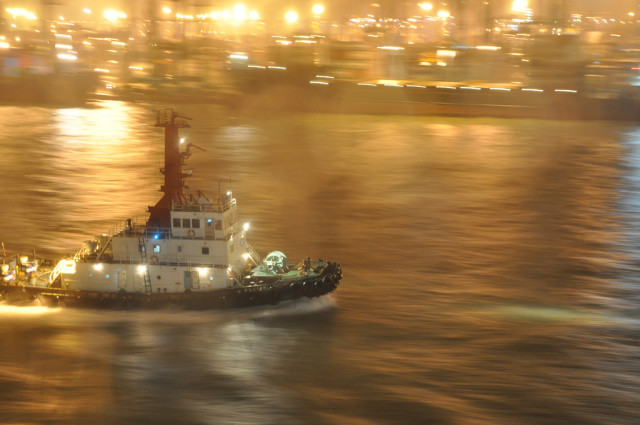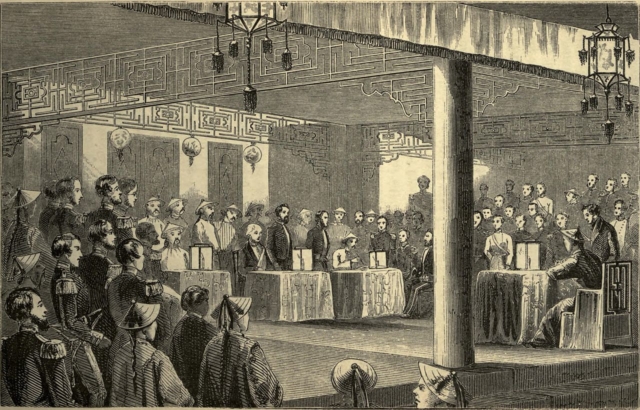The recent chemical explosions in the North China’s Tianjin municipality has brought international attention to the port city – but few outside of China may know much about this important municipality. Here’s everything you need to know about Tianjin.

The four municipalities in China are 1. Beijing 2. Tianjin, 3. Shanghai and 4. Chongqing.
Located in Northeast China’s Bohai Bay, Tianjin is about 180 kilometers (112 miles) from Beijing. The city has approximately 15 million people – about as many as Manila or Mumbai.
Tianjin is one of the four areas in China known as “Direct Controlled Municipalities” in China, which means it’s both a city and a provincial government. The other three municipalities in China are Beijing, Shanghai and Chongqing.
Municipalities are directly controlled by the Central Government.
It’s municipality designation dates to the 1928 during Republican-era China, and it remained so even after the founding of the People’s Republic of China in 1949.
Due to its proximity, Tianjin has long been associated with Beijing and has acted as port to the Chinese capital. A high-speed railway connects the two cities, which is about 1-2 hours apart. Many people live in Tianjin and commute to Beijing.
In the last few years Chinese economic and urban planners have also been working to develop the Jing-jin-ji regional cooperative bloc, as a way to better coordinate trade and growth in Beijing, Tianjin, and Hebei province (“Ji” has been a traditional term for the province) that would equal the size of the U.S. state of Kansas with a population six times larger that New York.
This integration will concentrate on infrastructure development in Hebei Province, enriching Tianjin’s industrial pattern, and easing Beijing’s urban malaise, Yi Peng, an urban development researcher, told Xinhua.

The establishment of the Tianjin Economic-Technological Development Area (TEDA) in 1984, one of the country’s earliest development zones, has contributed to increased foreign investment in Tianjin and China, making it an economic hub in North China.
The Binhai New Area, where the Aug. 12 explosion took place, was created in 2006, recognizing the region as the third-biggest economic engine after Shenzhen and Shanghai for modern manufacturing, research and development, and incubation, according to Binhai‘s website.
In December 2014, the Tianjin Free Trade Zone was approved, the only free trade zone in northern China. In the zone, foreign companies can set up wholly-owned enterprises.
One fifth of Fortune 500 companies have investments in Tianjin, including multinational corporations such as Dow Chemicals, which launched its Tianjin site in 2011 and Russian state energy giant Rosneft which inked a deal with PetroChina to operate in Tianjin last year.
Tianjin port is also the fourth largest port in the world in terms of merchandise passing through.

Much to its advantage, Tianjin is a port city. Photo by Gerald Byrnes on Flickr.

Etching of Tianjin from the 1600s.
Tianjin got it’s name from the Chinese emperor, also known as Tianzi, which means son of heaven. It’s also been called other names throughout it’s history, including Jingu and Jinmen, according to the Tianjin government.
Early settlements in Tianjin date to the Warring States period (475-221 B.C.), but it wasn’t until the Sui Dynasty (581-618) that the city became a major transportation hub with the opening of the Great Canal in 610 A.D. The city linked the river and sea in North China.
During the Tang Dynasty (618-907), Tianjin was known for transporting grain and silk. In the Yuan Dynasty (1206-1368) it became an established sea ferry city. In the subsequent Ming Dynasty (1368–1644), it became a military powerhouse.
In China’s last dynasty, the Qing Dyansty (1644-1911), the city was attacked by British and French forces from 1858-1860 as part of the Second Opium War.
As a result of that war, China was forced to sign the Treaty of Tianjin, which allowed Western powers including the United Kingdom, France, Russia, and the United States to sign treaties with China granting them rights to trade on both the coast and interior of China along the Yangtze River. These nations were also allowed to establish legations, charge low tariff for imported goods, and legalize the trade of opium.
The city would remain largely under foreign control until 1943.
Due to the foreign influence, Tianjin was a center for the China’s Self-Strengthening Movement, and Tianjin took the lead in China’s military modernization, the construction of railroads, telegraph, telephone, post, mining, modern education and legal systems, according to the Tianjin Municipal Party Committee.
The colonial architecture remains in the city, including Victorian, homes, Roman-style streets, French châteaux and German Bavarian villas. However traditional Chinese architecture is also abundant.
The Great Wall of China can be seen in the north of the city and Tianhou Palace, originally built during the Yang Dynasty though it’s been renovated many times since, has long been a site for people to pray for navigation safety and to honor the goddess of the sea. The city also houses China’s oldest existing wood-structural pavilion, the Dule Temple which has a 16-meter-tall statue of the goddess of mercy, one of the biggest in the country.
In recent years, it’s also been a hub for modern architecture, such as the Tianjin Museum.
Story compiled with information from Xinhua, China Today magazine, Chinaculture.org, China.org.cn, Tianjin Municipal Party Committee, cits.net.
 CGTN America
CGTN America Depiction of the signing the Treaty of Tianjin in 1858.
Depiction of the signing the Treaty of Tianjin in 1858.
